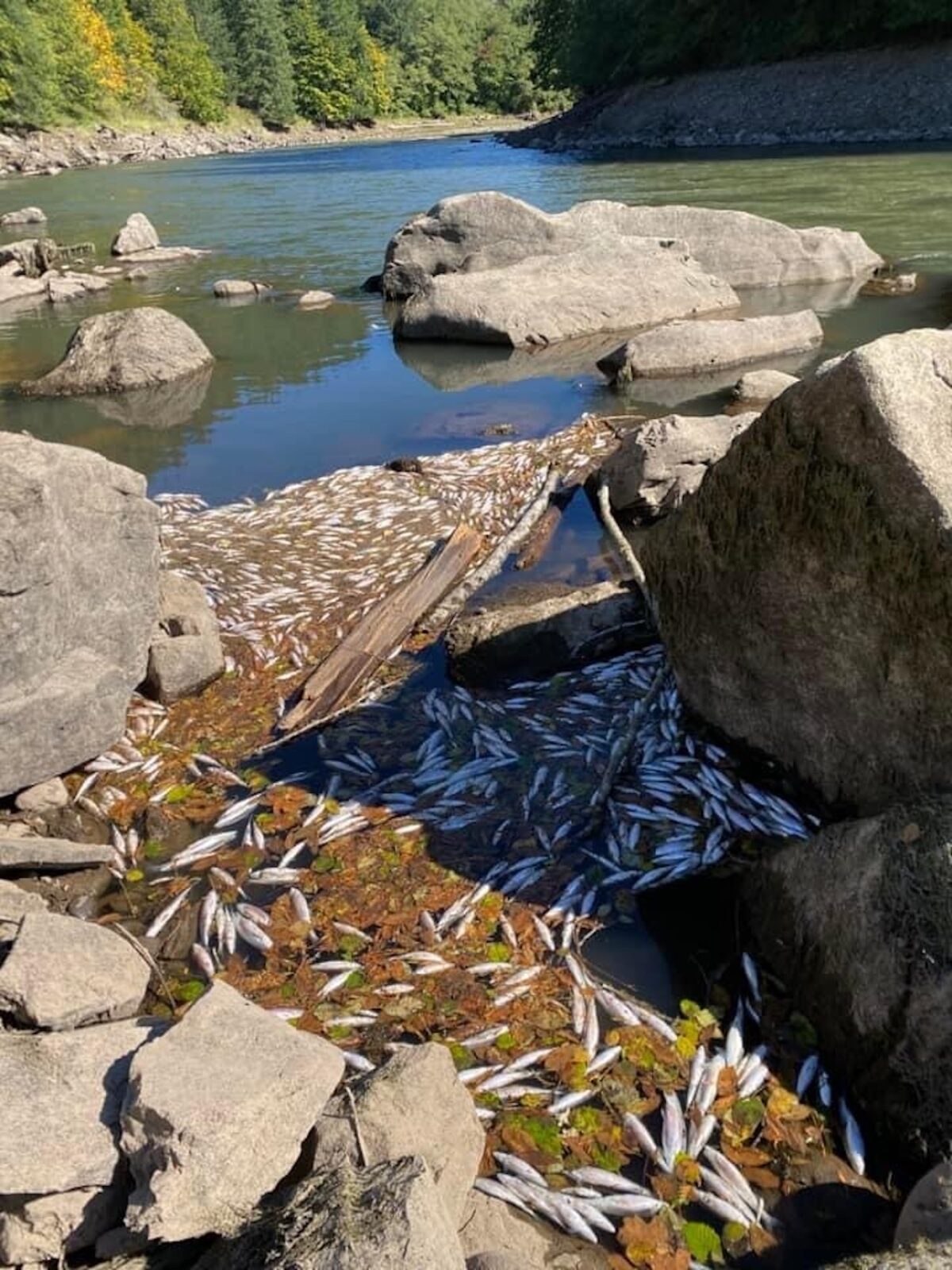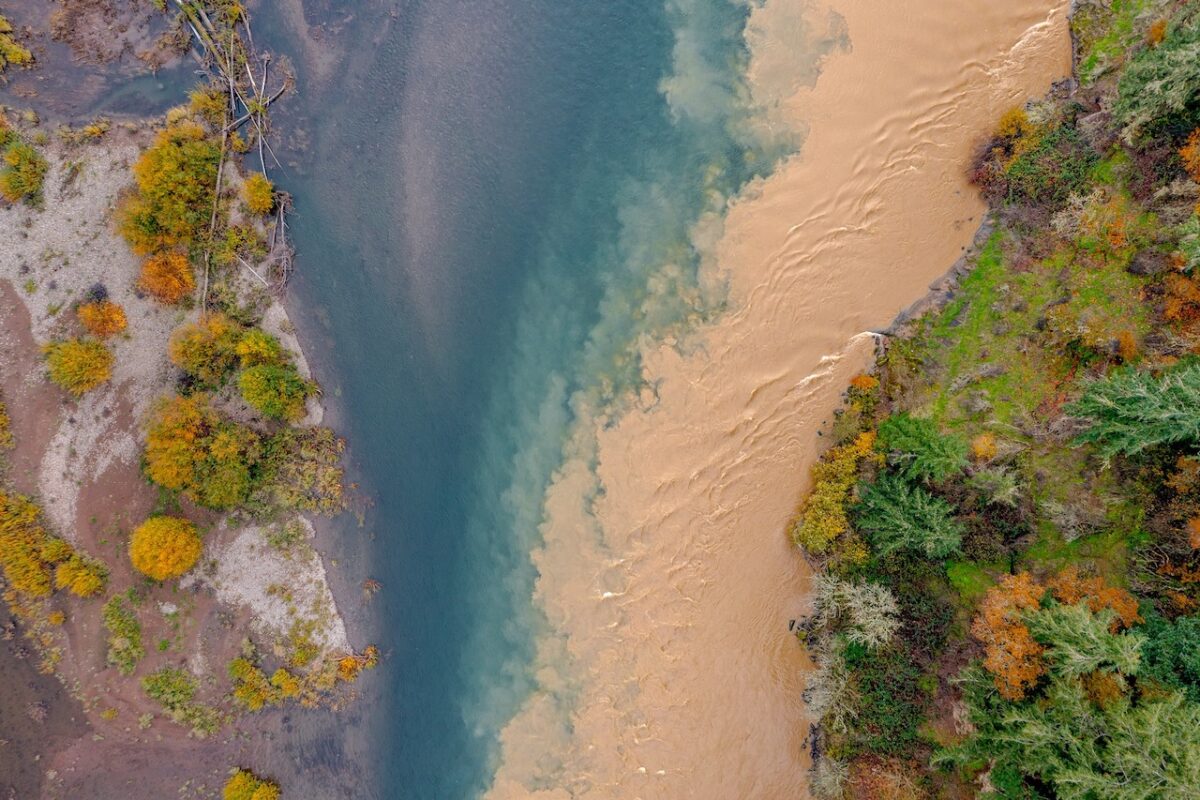
Mud In The Eye Of Restoring Willamette Spring Chinook, Winter Steelhead Runs
The yin and aye-yi-yi of restoring salmon and steelhead passage in a big Northwest watershed is on full display this month.
Bright idea: An Oregon Public Broadcasting/Pro Publica story scrutinizing Army Corps of Engineers’ plans to build $622 million worth of giant smolt collectors at a pair of the agency’s Willamette Valley dams argued that instead the facilities’ lower gates should just be opened, “letting salmon ride the current as they would a wild river.”
Messy blowback: Doing essentially that at two nearby reservoirs let fly silt bombs.

It left mud in the eye of that far cheaper and much “simpler way” to help young spring Chinook and winter-runs migrate from waters in the Cascades their wild parents had been trucked up to, as well as regional recovery efforts, not to mention saw residents’ wells go dry and left nearby towns fearing it may cost millions to keep their water drinkable – after they’d been assured the drawdown wouldn’t impact quality.
Face, meet Palm.
A LITTLE BACK story here in case you haven’t been following the loooooong legal battle to get the Corps to improve passage for the two Endangered Species Act-listed stocks at their Willamette dams, built to control flooding but which blocked off a ton of fish habitat. Things came to a head in 2021 when U.S. District Court Judge Marco Hernandez in Portland essentially ordered that Lookout Point and Green Peter Reservoirs, located southeast and northeast of Eugene, respectively, be drawn down to very low levels from late summer through fall to help the surface-oriented salmonids find their way past the dams.
That has worked at Fall Creek Reservoir, just north of Lookout Point.
This year’s drawdowns weren’t really noticeable in terms of water quality until the rains hit the mountains and exposed lakebeds, but a harbinger that things might not be as straightforward as hoped was seen in October when a large number of kokanee died from barotrauma after being sucked out of Green Peter. Some loss was expected, but not 8,000 fish.

Palm, I believe you’ve met Face, yes?
Between the loss of fish, fishing and tourism dollars, as well as the water supply issues, locals aren’t too happy, as shown in coverage by Salem Statesman-Journal outdoor reporter Zach Urness. Disabled vet Larry Nelson, whose well dried up this fall and was looking at a $25,000 to $30,000 bill to drill a deeper one, told him, “I want to save the fish, but at what cost?”
Urness reported that the Native Fish Society, whose lawsuit (along with Northwest Environmental Defense Center and WildEarth Guardians) led to the drawdown, said the Corps should cover the cost; the Corps said that would require an act of Congress; and local U.S. Rep. Lori Chavez-DeRemer (R) asked the federal court to revisit the injunction because it was “causing more harm than good.”
So did commissioners in Linn County, for whom the situation brought up old wounds in the form of lost logging and mill jobs due to the impact of spotted owl protections in the Willamette National Forest in the 1990s. They said they had been told to “reinvent themselves,” and the form some of that took was based around recreation on the reservoirs, which are now essentially drained through mid-December, when refilling begins.
Given the judge’s ruling, hands are frustratingly tied for the time being. Kokanee Power of Oregon’s board told me it is following things closely and that it understood the reasons behind the Corps’ drawdowns. It said that Oregon Department of Fish and Wildlife biologists told them the damage to Green Peter’s popular kokanee fishery is unclear at the moment.
“The turbidity of the water will, in fact, hamper their ability to breathe and feed, but whether it’s fatal will not be known until the spring,” the board said. “One of our big questions is, ‘Will the massive amounts of silt destroy the current salmon redds?’ Unfortunately, our ability as an organization to have any influence on this is pretty moot because this was a federal injunction, and even ODFW has no power in changing this. Write to your Congressmen and -women and make your voice heard.”

YOU KNOW ME, I’m a glass-half-full kind of guy, even if the water in that glass is, well, on the murkier side. I readily acknowledge that I’m neither an engineer nor a deep thinker who has better ideas, but if there are bright spots, it’s that all that mud should be less of a factor in the future if the deep drawdowns continue.
Some lessons have hopefully been learned as the Corps and Congress consider the long-term future of the fed’s Willamette system in terms of hydropower generation, recreation and how best to achieve fish recovery and the price tag of that.
There’s probably also food for thought in there as negotiations about the four lower Snake River dams potentially come to a head in another courtroom in mid-December.
And while you know I’ll always advocate for fish and wildlife habitat, as well as migratory corridors and passage for critters, this is a good reminder that there can be unintended consequences as we try to move fast to restore the natural world and that we have to be cognizant of pratfalls, especially those that might make our ultimate goals harder and affect local and wider buy-in.
I know I can’t take too many more forehead slaps as I advocate for recovery and conservation. I’m on the concussion protocol as it is.

Editor’s note: A shorter version of this appears as The Editor’s Note in the December 2023 issue of Northwest Sportsman Magazine.
